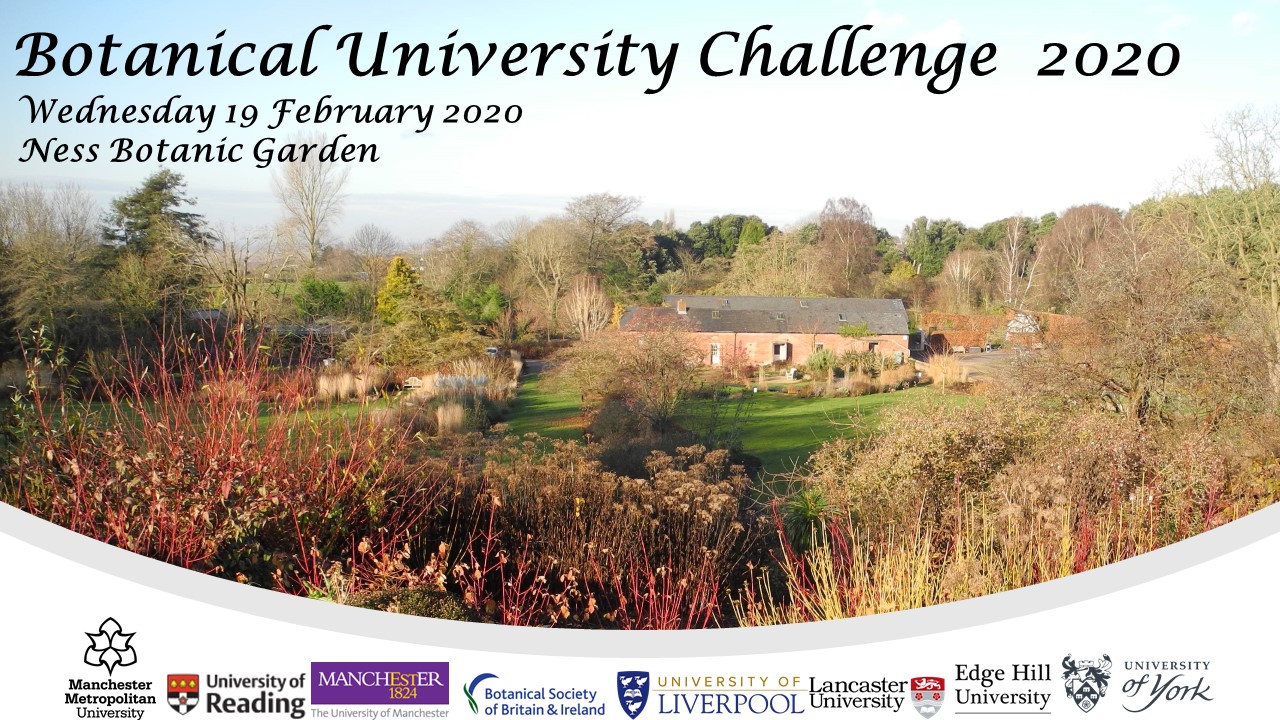A team of undergraduate and postgraduate botany students from University of Reading will be competing to hold on to their 2019 champions title in the third Botanical University Challenge to be held at the beautiful Ness Gardens, University of Liverpool on Wednesday 19th February.
The Reading team will go head-to-head with seven other University teams: Liverpool, Edge Hill, Manchester, Manchester Metropolitan, Lancaster, York, and Aberystwyth. This nationwide event is an entertaining botanical take on the popular TV formula of University Challenge and was devised back in 2015 by University of Reading’s own botanical champion Dr M together with John Warren (Aberystwyth) and Paul Ashton (Edge Hill University).
The University of Reading Botany Teams are reigning champions from the past two BUC events, testament to the quality and breadth of botanical brilliance amongst the Reading undergraduate and postgraduate students who have taken part since the first contest at Kew in 2016, chaired by botanical celebrity James Wong. The second Botanical University Challenge was held here at Reading in February 2019 as part of Reading Botany 2019 -a series of events celebrating 50 years of the MSc in plant diversity, itself a source of many distinguished botanists working globally in biodiversity conservation, agriculture, climate change and education.
Plants are hitting the headlines more and more, whether through our desire for beautiful houseplants, vegan diets, mass tree-planting to mitigate climate change, or biodiversity conservation and stopping human-induced species extinctions. Our screens are regularly filled with green plants in wildlife documentaries, but as Dr M says, “for too long plants have been effectively relegated to green wall paper as we humans tend to ignore plants in their environment in preference for allegedly more charismatic animals, especially cuddly furry mammals with big eyes and endearing behaviours”. However, young people amongst others are increasingly demanding urgent changes to school and university curricula to help develop a more joined up and relevant approach to the environment, especially in how we understand the extraordinary diversity and potential of plants.

The 2020 Botanical University Challenge is a unique opportunity for like-minded students in tertiary education to come together through plants to share in a fun event.
They will tackle questions such as: “from what plant is the pigment that gives the Eastern European soup borscht its distinctive reddish-purple colour?” or “which cucurbit fruit would you find in a bathroom ?” or “Which plant produces the largest seed?”
How well do you think you would do……? Well, book your free place here and find out!
If you cannot attend on the day then join in online via Twitter and if you Tweet please use @BUC2020 #BUC2020.
Dr M says: The very best of luck to all contestants and whatever happens on the day there can be no doubt that the overall winner will be the plants we all love and cherish so much and which do so much for us, always and in all ways!
And to put you out of your misery here are the answers to the sample questions!
What would smell as sweet by any other name = a rose (Romeo and Juliet, Shakespeare);
From what plant is the pigment that gives the Eastern European soup borscht its distinctive reddish-purple colour = Beetroot (the pigment is betacyanin)
Which cucurbit fruit would you find in a bathroom = Loofah (fruit of species of genus Luffa in the plant family Cucurbitaceae)
Which plant produces the largest seed = Lodoicea maldivica (Coco de mer or Double Coconut)

